Serving societies and investigating viruses
Craig Cameron hadn’t planned to become a biochemist. Then he found himself caring for people with AIDS.
As an undergraduate at Howard University, Cameron volunteered at a hospital in the Washington, D.C., area during the height of the AIDS crisis, an experience that led him to graduate work with RNA viruses at Case Western Reserve University and a career investigating viral dynamics. At Pennsylvania State University, his lab used poliovirus and hepatitis C virus to examine nucleotide incorporation by the RNA-dependent RNA polymearase during viral replication, a mechanism essential for developing antiviral therapies. He recently relocated to the University of North Carolina at Chapel Hill to take a position as chair of the department of microbiology and immunology.

A member of the editorial board of the Journal of Biological Chemistry since 2003, Cameron was named a JBC associate editor in early 2018. He also served as chair of the Minority Affairs Committee at the American Society for Biochemistry and Molecular Biology from 2008 to 2011; before that, he was a committee member for more than a decade. Last summer, he was elected president of the American Society for Virology, a term he will begin in June.
Cameron spoke with John Arnst, an ASBMB Today science writer, about his work. The interview has been edited for clarity and length.
You recently moved from Penn State to UNC to chair the department of microbiology and immunology. What prompted the move?
I was at Penn State for 25 years — three years as a postdoc and 22 years on the faculty of the biochemistry and molecular biology department. I decided to move primarily because I was interested in doing more translational research. We’ve studied basic mechanisms of viruses for 20 plus years, but we have been recently more interested in trying to understand between-individual differences in the variability and outcomes of infection — you and I could both be in the same room with someone who has the common cold virus, and we won’t necessarily both get it. Some of that is related to our genetic differences. Here at UNC, there are people and research cores that enable looking at that more closely.
So you’re interested in looking at this translational work, how our genetics affect things like catching the common cold. How did you get started working on RNA viruses?
I was an undergraduate right in the thick of the AIDS epidemic, at a time before HIV had been discovered. I was contemplating going to medical school, doing volunteer work in local hospitals. No matter what you were doing, you saw individuals suffering from complication of AIDS-related disease. Before I graduated, it was clear that HIV was a retrovirus, so I decided I wanted to study retroviruses.
We now have so many therapeutics for HIV. One reason we were able to move so rapidly was that a lot of people were studying the avian retroviruses — for example, Rous sarcoma virus. (Author’s note: RSV, which causes sarcomas in chickens, was the first oncovirus to be discovered.) At Case Western, people were studying these avian tumor viruses either because they were interested in the oncogenes or because they were interested in basic molecular details of replication of retroviruses. There weren’t a lot of centers for HIV at the time.
My thesis project was related to discovery of mutations that might occur in the retroviral genome in response to treatment with inhibitors, antiretroviral agents. The question was: Will resistance develop? So we devised a strategy to isolate mutants and make predictions about mutation that would cause resistance. And in doing so, we had a biochemical component and a biological component, and it was that biochemical component that led me to do a postdoc at Penn State studying enzymes.
You ended up staying at that institution for two decades. What was the environment like?
It was great. I went to Howard University as an undergrad, and while there were sports, there’s nothing like Division I sports. I had never been in a culture where you have tailgating and all the enthusiasm where, come football season, the whole weekend is devoted to the team.

The first Penn State game I went to, I felt like I was going into some temple where you could feel the energy and wonderful thoughts from everybody. A lot of life revolves around that in terms of the social aspects of being in Happy Valley. (Author’s note: This nickname for the Penn State area is derived from the fact that the area was not hard hit by the Great Depression.)
From a scientific point of view, it was also great. I worked for Steve Benkovic, who is now in his 80s, still running a lab, having started companies. He’s one of the most intense, energetic scientists I know. And he established an environment where there were maybe 15, 20 postdocs at one time. It was like a mini department.
Everyone did something different, came from a different environment. But for the most part, everyone was friendly. So I made a lot of lifelong friends and collaborators. Through journal clubs and events like that, I came to know a lot of the faculty, including the chair of the department, which provided an opportunity for me to interview there for a position.
That sounds like a phenomenal environment. When you were younger, did know you wanted to be a scientist?
I did have chemistry sets when I was growing up, but I really wanted to be a teacher. Any opportunity I got to put a group of my cousins together and teach them something, I would.
The transition to science came from an interest in medicine. I had an aunt who had cancer when I was in junior high school. Because she was in some clinical trials, I became more aware of the process of drug development and discovery. So, at Howard, I majored in chemistry, since I was told that a chemistry major with a math minor would stand out in the pool of applicants for medical school.
At what stage, between Case and your years at Penn, did you become involved with JBC and the ASBMB?
I came from an environment that had a really rich history in terms of the ASBMB and JBC. Richard Hanson, a former president of the ASBMB, was at Case Western in the department of biochemistry, and Harland Wood was very active in the ASBMB. (Author’s note: Hanson, who also served as a JBC associate editor, died in 2014; Wood died in 1991.) We all published in JBC, and every year for the ASBMB meeting, the whole department essentially shut down because everyone went.
And you chaired the Minority Affairs Committee a little while back.

I was a member of the MAC for many, many years before I became chair. A lot of that was Judy Bond, who was at Penn State College of Medicine in Hershey. (Author’s note: Judith S. Bond was president of the ASBMB from 2004 to 2006 and served as a JBC associate editor.) I knew her because we served in some joint graduate programs together, and one of her students was co-mentored by my postdoctoral mentor. Once I joined the faculty at Penn State, she was among the first to get me involved in committees, including an ad hoc membership committee.
Now that it’s been some time since you served as chair, what were some of your proudest accomplishments from your time on the MAC?
I think the biggest contribution that I made was to bring people on the committee that have been sustaining members of the MAC, including Squire, Sonia, Takita and Regina. All of these people came in under my leadership and stayed on and developed different, synergistic activities within the ASBMB that had a clear impact on the way diversity initiatives were embraced. (Author’s note: Squire J. Booker succeeded Cameron as chair of the MAC, which now is chaired by Sonia C. Flores; Takita Felder Sumter is a voting member of the ASBMB’s Governance Council; Regina Stevens-Truss is a former member of the MAC who chaired the ASBMB HOPES project.)
Professional development continues to be a very important aspect of the MAC’s mission. One example is the IMAGE grant writing workshop that was initiated under Squire Booker’s leadership, which has had a huge impact on the success rate of participating faculty.
The ASBMB has been a leader in minority affairs. I am president-elect of the American Society for Virology, and we had a council meeting over the summer where we were able to arrange a call with Barbara (Author’s note: Barbara Gordon is the executive director of the ASBMB) and Sonia and Squire so that they could share with us the successes of the ASBMB so we could start bringing those initiatives to the ASV.
And you continue to be involved with the ASBMB in new ways. How has your role at JBC been going, especially in the wake of the move?
At Penn State, I would teach a fall course of general biochemistry to 150 students. When you’re trying to deploy such a course and be innovative in your teaching, with both the pedagogical approaches and the technology in the classroom, it takes a lot of time. By taking that off my plate, I have a lot more time than ever before.
I look at my inbox in the morning, and if there’s a JBC paper to be assigned, I’ll usually do it while I’m having my coffee. Then, if reviews have returned, I’ll deal with it after dinner while I’m having a glass of wine. I wake up to it and go to bed with it, but as long as you stay on top of it, it’s not overwhelming, right?
That sounds like a good way to handle it. What do you like to do when you’re not reviewing papers or working in the lab?
I enjoy traveling, but one of the things that I can do locally and that I’ve been doing for many years now is cooking. I’m a biochemist; I love to cook things in the lab. And in the kitchen, you really have to keep a good notebook and weigh everything out.
So I try to develop good recipes for meals that I’ve had that have left a positive impact or impression on me.

What’s your favorite meal that you were able to re-create in the last year or so?
There’s this mushroom bisque that I had a couple years ago, but it took a long time for me to get the right combination of mushrooms because it wasn’t clear which mushrooms were used. I tried a lot of different things, like mushroom soup plus cream or water to make it denser. But eventually I got it.
That sounds delicious. One last question — do you have any advice or words of wisdom for young scientists?
I try to tell my students they first need to make sure that what they’re doing is exciting to them. Just because you enter a lab doesn’t mean you need to stay in the lab, right? You need to follow your interest. In my lab, I would say most of the students stay, but being an honors adviser at Penn State, I have seen a lot of circumstances where people try to make the research fit their personality, and it doesn’t always work.
Just having students engaged in the process of discovery resonates with them. And it’s also exciting for their mentors. I always match undergraduate students with either graduate students or postdocs, and it’s exciting for me to watch the graduate students and postdocs light up from the excitement and the joy of the undergraduates that they’re mentoring when they learn something new or see something for the first time.
Enjoy reading ASBMB Today?
Become a member to receive the print edition four times a year and the digital edition monthly.
Learn moreGet the latest from ASBMB Today
Enter your email address, and we’ll send you a weekly email with recent articles, interviews and more.
Latest in People
People highlights or most popular articles
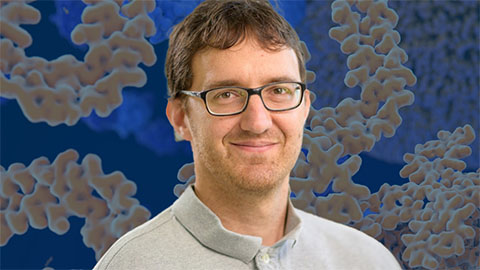
Truttmann recognized for cell stress research
He was honored by the Cell Stress Society International for his work on heat shock protein 70.

Understanding the roles of extracellular matrix and vesicles in valvular disease
MOSAIC scholar Cassandra Clift uses mass spectrometry and multiomics to study cardiovascular calcification and collagen dysregulation, bridging her background in bioengineering and biology to investigate extracellular vesicles and heart disease.
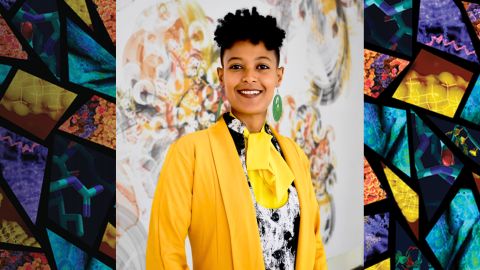
Learning, leading and lifting others
Tigist Tamir’s journey from aspiring astronaut in Ethiopia to cancer researcher at the University of North Carolina highlights the power of mentorship, persistence and curiosity in shaping a scientific career focused on discovery and equity.
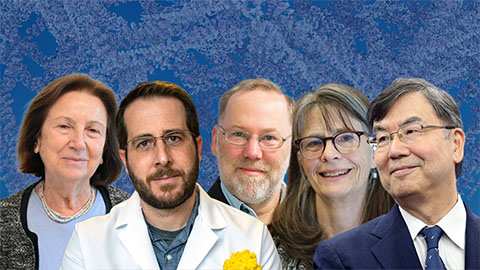
Biochemists and molecular biologists sweep major 2025 honors
Recent Nobel, MacArthur and Kimberly Prize honorees highlight the power of biochemistry and molecular biology to drive discovery, including immune tolerance, vaccine design and metabolic disease, and to advance medicine and improve human health.
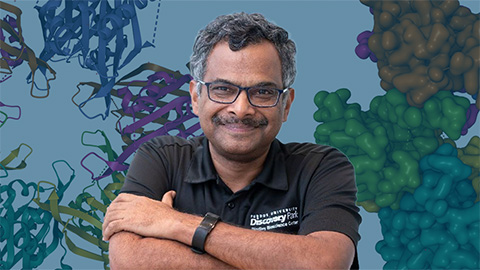
Subramanian receives electron microscopy honor
He delivered remarks at the International Conference on Electron Microscopy in Bangalore, India.
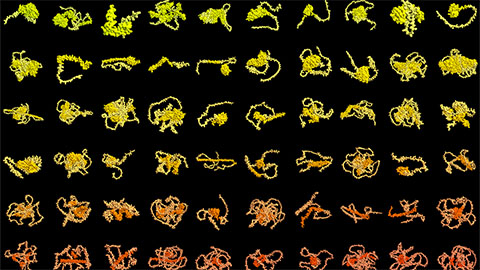
Bioart for fall: From order to disorder
The cover of the fall issue of ASBMB Today was created by ASBMB member, Soutick Saha, a bioinformatics developer at Wolfram Alpha LLC.

